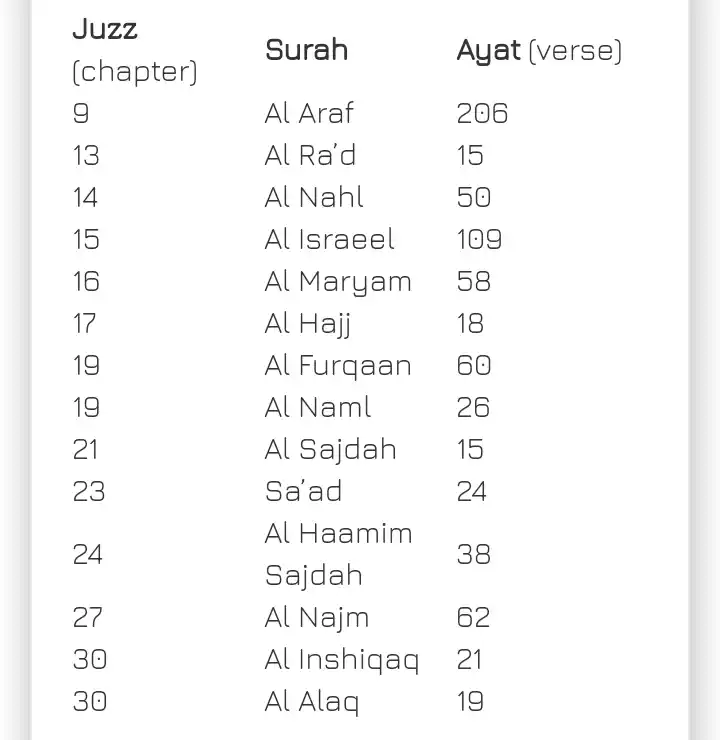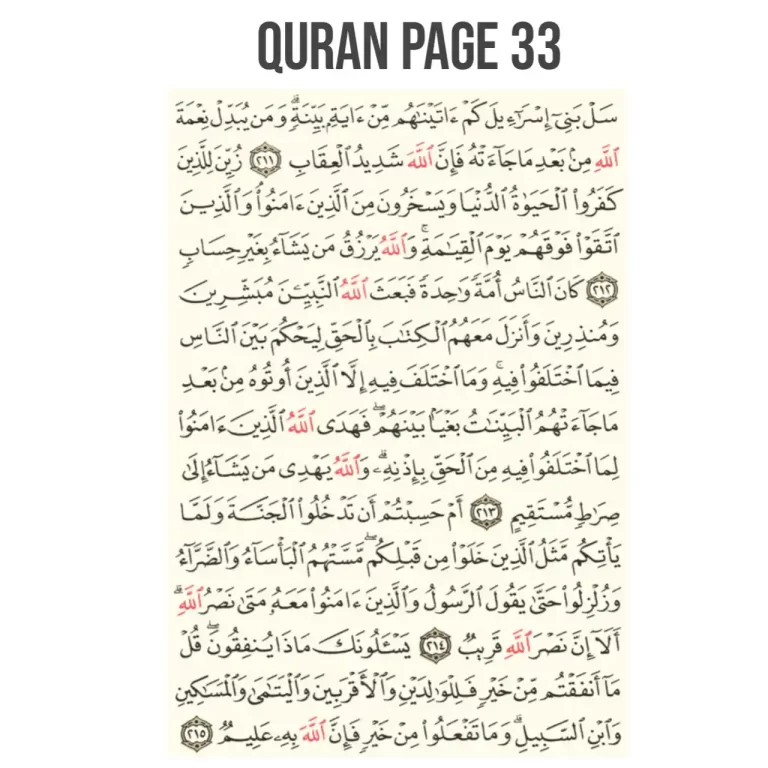How To Perform Sajdah in Quran?
Advertisements
There is a difference in Arabic between the words sajdah and sujood. Sajdah is one single act of prostration, while sujood refers to the act of prostration itself. Let’s learn How to perform sajdah in Quran.
The arabic word for prostration of recitation is Sujud tilawah. There are a number of places in the Quran, 14 or 15 and in these verses once we read it, it is highly recommended for us to perform sujud prostration.
How To Perform Sajdah in Quran?
The Word Sujood: Prostration Sujood literally means prostration. It is, however, important that no single English word or expression can convey the full meanings of Islamic terms.
The following explanation will bring out the difference. The English word prostration, according to Oxford Advanced Learner’s Dictionary, means lying stretched out on the ground with one’s face downwards.
In the technical language of the Sharee’ah, the term sujood is a part of the prayer, or salaat. Allah’s Messenger SAW used to say,
Advertisements
“When a servant [of Allah] prostrates, seven limbs prostrate with him: his face, his palms, his knees and his feet.” (Muslim)
He used to order likewise, saying, “When you perform sujood place your palms on the ground and raise your elbows.
Do not spread your forearms like a dog spreads his.” (Muslim)
Another version reads, “None of you should rest his arms to the ground the way a dog rests them.” (At-Tirmidhee)
He also used to say, “There is no prayer for the one whose nose does not feel as much of the ground as the forehead.” (At-Tabaraanee)
Advertisements
In one narration it comes, ‘When you perform sujood, put your face and hands down firmly, until all your bones are relaxed in their proper places.” (Ibn Khuzaymah)
The Prophet SAW would support himself on his palms, put his fingers together and point them towards the qiblah, keeping his feet upright.
Hence, he would prostrate on seven limbs: the palms, the knees, the feet, and the forehead and the nose. He once observed, “I have been ordered to prostrate on seven bones.” (Muslim)
How To Perform Sujud Tilawa?
The most authentic opinion without going into details is that it is one prostration and you say Allahu Akbar and you go down.
Whether you’re sitting, standing or whatever.
You don’t have to stand up if you’re sitting or sit up if you’re lying down. Well, actually if you’re lying down you have to sit so that you can prostrate so you say:
Allahu Akbar and you prostrate and you say subhana rabbiyal a’ala three times or whatever dua afterwards you would like to make without any problem.
After you finish, you raise your head without takbir and you do not offer salam. So it’s only one takbeer when you go to prostrate.
You don’t have to be in the state of wudhu, you don’t have to face the qibla but if you do, that’s good, you don’t have to be covering your aura even.
Covering the aura, facing the qibla, being in the state of purity, these are conditions for salat.
Prayer is inaugurated by takabiratul ihram, concluded by salam with specific actions and words to be said in a particular way and with the intention of worshiping Allah.
Sujud tilawa is not like this, it is not part of the prayer, you can do it after fajr you can do it after asr, at the time of prohibition, without any problem.
Because it is not prayer this is why yes it’s highly recommended to be in the state of wudu, face the qibla, covering your aura but if you don’t,.none of this is mandatory and your sajda is totally valid.
When you perform sujood at-Tilaawah you perform sujood, put your face and hands down firmly, until all your bones are relaxed in their proper places.
The Prophet SAW would support himself on his palms, put his fingers together and point them towards the qiblah, keeping his feet upright.
Hence, he would prostrate on seven limbs: the palms, the knees, the feet, and the forehead and the nose. He once observed, “I have been ordered to prostrate on seven bones.” (Muslim)
There are fifteen verses (aayah) in the Qur’an which require us to perform a prostration when we read or hear them.

In them it is mentioned that Allah’s servants and creation prostrate before their Lord.
When one of these verses is read (for example 96: 19 or 53: 62), readers and listeners alike perform sujood, either directly from the sitting position, if one is sitting, or from the standing position if, for example, the passage is recited during the prayer.
The prayer is then resumed in the normal order.
The verses calling for sujood are often amplified by printing a line above the actual words, mentioning the word ‘sajdah’ in the margin of the printed copies of the Qur’an.
Sujood at-Tilaawah outside the prayer is performed as follows:
- Face the qiblah (standing or sitting).
- Say takbeer, i.e. Allaahu Akbar.
- Prostrate on the floor, making sure that the palms, knees, toes, nose and forehead are placed on the floor,
- And glorify Allah by saying: Subhaana rabbiyal-A’ala (Glory be to my Lord, Most High), three times.
- Rise saying takbeer.
According to traditions, while reciting the Qur’an in large gatherings, when the Prophet SAW came upon a verse the recitation of which called for sujood, he would prostrate and the whole gathering would follow him.
The traditions mention that sometimes some people did not have room to prostrate. Such people prostrated on the backs of others. (AI-Bukhaaree)
It is reported in connection with the Conquest of Makkah that in the course of the Qur’anic recitation, as the Prophet recited such a verse, those standing fell into prostration, while those who were mounted on horses and camels performed prostration in that very state.
It is also recorded that while delivering a sermon from the pulpit, the Prophet SAW came down from the pulpit to offer prostration, and resumed his sermon thereafter. (Abu Daawood)
Read Quran Page 33 Full Meaning In English.
Advertisements








3 Comments